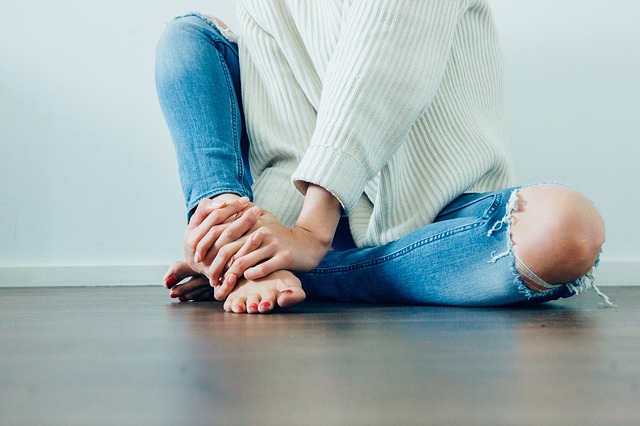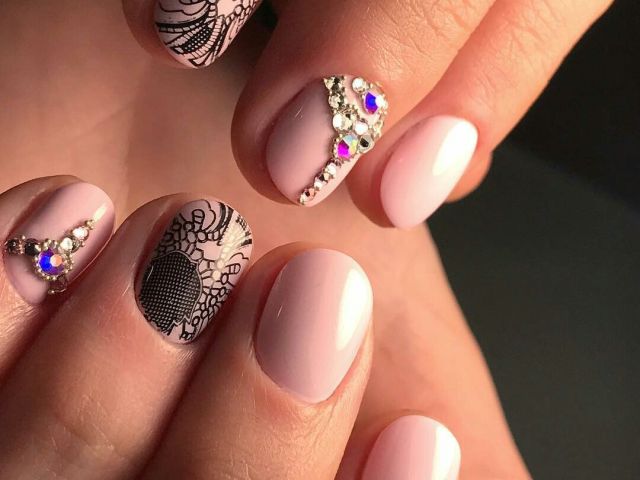Perfume, a blend of aromatic essences including the distinct and popular patchouli fragrances, has been enchanting humans for centuries. Beyond its role in personal grooming, it’s a subtle messenger of personality and mood. When applied to clothes, perfumes, especially those with the deep and lasting notes of Patchouli, extend their influence, enveloping us in a fragrant aura. However, one question often lingers in the minds of scent enthusiasts: “How long does perfume last on clothes?”
This blog post seeks to unravel the mysteries of perfume’s staying power on fabrics. From the interplay of perfume molecules with different textiles to the impact of external factors like climate, we’ll explore the multifaceted world of fragrance longevity on clothes. Whether you’re a perfume aficionado or a curious novice, this guide will provide valuable insights into making your favorite scents last longer on your wardrobe.
Contents
- The Duration of Perfume Fragrance on Fabric
- Factors That Influence Perfume Longevity on Clothes
- Types of Perfumes and Their Lasting Power on Textiles
- The Science Behind Perfume Molecules and Fabric Interaction
- Tips for Maximizing Perfume Longevity on Your Wardrobe
- Perfume Application Techniques for Extended Clothing Scent
- Consider the Occasion
- Author
The Duration of Perfume Fragrance on Fabric
When it comes to understanding how long a perfume lasts on fabric, several factors come into play. The type of perfume, the fabric’s nature, and even the wearer’s activities all contribute to the fragrance’s lifespan.
Perfume Composition
Perfumes are composed of three main components: top notes, middle notes (or heart notes), and base notes. Top notes are the initial, lighter scents that you smell immediately upon application. Middle notes form the heart of the perfume, emerging as the top notes dissipate. Base notes, the longest-lasting fragrances, provide depth and longevity to the perfume.
The duration of a perfume on fabric largely depends on the concentration of these notes. For instance, Eau de Toilette, with a lower concentration of fragrance oils, typically lasts for a few hours. In contrast, Eau de Parfum, with a higher concentration of oils, can linger on clothes for up to eight hours or more.
Fabric Properties
The type of fabric also influences perfume longevity. Natural fibers like cotton and wool have a greater ability to absorb and retain scents compared to synthetic fibers like polyester. The weave and texture of the fabric can also affect how the perfume molecules interact with the material. Loosely woven fabrics tend to trap the fragrance more effectively than tightly woven materials.
Environmental Factors
Environmental factors such as temperature, humidity, and air circulation play a critical role in the evaporation rate of perfume on clothes. Higher temperatures can cause the perfume to evaporate more quickly, reducing its longevity. Conversely, cooler and less humid conditions can help preserve the fragrance for a longer duration.
Skin Chemistry
Interestingly, the chemistry of the wearer’s skin can also affect how long a perfume lasts on clothes. Skin type, pH levels, and even diet can alter the way a fragrance interacts with the fabric, impacting its staying power.
The duration of perfume fragrance on fabric is not a fixed measure. It varies based on the perfume’s composition, the nature of the fabric, environmental conditions, and the wearer’s skin chemistry.
Factors That Influence Perfume Longevity on Clothes
Perfume’s lasting power on clothing is not solely dependent on the fragrance itself but is influenced by a myriad of factors. Understanding these factors can help you maximize the longevity of your favorite scents on your garments.
Concentration of Fragrance Oils
The concentration of fragrance oils in a perfume plays a pivotal role in its longevity. Perfumes come in various concentrations, from Eau de Cologne, with the least concentration of oils, to Parfum, with the highest. The higher the concentration, the longer the scent tends to linger on fabrics.
Application Technique
How and where you apply the perfume on your clothes can also affect its lasting power. Spraying perfume from a distance allows it to disperse evenly over the fabric, while applying it too close can lead to concentrated spots which may evaporate quickly.
Interaction with Detergents and Fabric Softeners
The chemicals in detergents and fabric softeners can interact with perfume molecules, altering their scent and affecting their staying power. Using unscented laundry products can help preserve the original fragrance of your perfumes on clothes.
Body Heat and Movement
The body heat and movement of the wearer can influence how a fragrance evolves and dissipates. Areas of the body that generate more heat, like the chest or wrists, can intensify the scent and may also cause it to fade faster.
Exposure to Air and Light
Perfumes are sensitive to air and light exposure. When applied to clothes, the interaction with air and light can lead to the gradual breakdown of fragrance molecules, reducing their longevity.
Personal Habits
Personal habits such as smoking or eating strong-smelling foods can also impact the longevity of perfume on clothing, as these odors can overpower or mix with the fragrance.
Humidity and Climate
The local climate and humidity levels play a significant role in fragrance longevity. In humid conditions, scents may last longer as the moisture in the air holds the fragrance. In contrast, dry climates might lead to quicker evaporation of the scent.
By considering these factors, you can better understand and control how long your perfume lasts on your clothes. Adjusting your perfume choice, application method, and even your laundry habits can significantly enhance the endurance of your chosen scent on your garments.
Types of Perfumes and Their Lasting Power on Textiles
The world of perfumes is diverse, with each type offering a unique blend of scents and varying degrees of longevity on fabrics. Understanding these variations can help you select the right perfume for long-lasting fragrance on your clothes.
Eau de Cologne (EDC)
Eau de Cologne typically contains 2-4% perfume oils in alcohol and water. Known for its light, fresh scents, EDC is ideal for a subtle fragrance. However, its low oil concentration means it generally lasts for about 2 hours on fabrics.
Eau de Toilette (EDT)
Eau de Toilette, with 5-15% fragrance oils, offers a balance between mild and intense scents. It’s a popular choice for everyday wear, with a staying power of about 3-8 hours on clothes, depending on the fabric and environmental factors.
Eau de Parfum (EDP)
Eau de Parfum contains 15-20% fragrance oils, making it more concentrated and long-lasting than EDT. It can provide a lasting fragrance for 6-12 hours on clothes, with its richer and more complex scent profiles making it a favorite for special occasions.
Parfum (Pure Perfume)
Parfum, also known as pure perfume, has the highest concentration of fragrance oils, ranging from 20-30%. This high concentration results in a scent that can last up to 24 hours on fabric, making it the most enduring type of perfume. However, its intensity and price point make it a choice for special events rather than everyday use.
Solid Perfume
Solid perfumes, made from waxes and oils, offer a unique way to wear fragrance. They tend to have a more subtle scent than liquid perfumes and can last for a similar duration as Eau de Toilette, depending on the concentration of fragrance oils.
Natural vs. Synthetic Fragrances
Natural fragrances, derived from plant and animal sources, can have varying lasting powers on textiles. Synthetic fragrances, engineered in labs, often have a more predictable and sometimes longer-lasting effect on clothes.
Layering Scents
Layering different types of perfumes can also affect their lasting power on fabrics. Combining a light EDC with a more concentrated EDP can create a unique scent profile and extend the overall fragrance duration on your clothes.
Understanding these types of perfumes and their characteristics can help you make informed decisions about which scents to wear and how to apply them for maximum lasting power on your clothing.
The Science Behind Perfume Molecules and Fabric Interaction
The interaction between perfume molecules and fabric fibers is a fascinating area of science that explains why some scents linger longer on clothes than others. This relationship is influenced by the chemistry of the perfume, the nature of the fabric, and the environment.
Perfume Composition
Perfumes are composed of various molecules that determine their volatility and how they interact with fabrics. The top notes, usually made of smaller, more volatile molecules, evaporate quickly, providing the initial burst of fragrance. The heart and base notes consist of larger, less volatile molecules that linger longer and bond with the fabric fibers.
Fabric Absorption
Different fabrics absorb and retain scents differently. Natural fibers like cotton, wool, and silk have a porous structure that allows them to absorb and hold onto the fragrance molecules better than synthetic fibers like polyester or nylon. The texture and weave of the fabric also play a role, with thicker and looser weaves generally retaining scents better.
Molecular Bonding
The interaction between perfume molecules and fabric fibers can be seen as a form of molecular bonding. Some fragrance molecules form weak bonds with the fibers, allowing them to be retained on the fabric for extended periods. The strength of these bonds is influenced by the chemical nature of both the fragrance and the fabric.
Environmental Impact
External factors like temperature, humidity, and air movement can affect the evaporation rate of perfume molecules from fabric. Higher temperatures can accelerate evaporation, while higher humidity levels can slow it down, allowing the fragrance to linger longer.
pH and Skin Oils
The pH of the skin and the presence of natural oils can also affect how perfume molecules interact with fabrics. These factors can alter the fragrance slightly and impact its longevity on clothes.
Understanding the science behind perfume molecules and fabric interaction can help you choose the right perfume and fabric combinations to achieve the desired longevity of fragrance on your clothes.
Tips for Maximizing Perfume Longevity on Your Wardrobe
Enhancing the staying power of your favorite perfume on your clothes involves more than just choosing the right fragrance. Here are some practical tips to help you enjoy a lasting scent on your wardrobe.
Choose the Right Fabric
Opt for natural fibers like cotton, wool, or silk when you want your perfume to last longer. These materials have a higher capacity to absorb and retain fragrance compared to synthetic fibers.
Apply Perfume Properly
Spray your perfume from a distance of about 6-12 inches to ensure even distribution on the fabric. Target areas where the fabric moves and releases the scent, like the hem of a dress or the cuffs of a shirt.
Layer Your Scents
Layering scents can enhance their longevity. Start with a scented body lotion, followed by your perfume. This can help anchor the fragrance and make it last longer.
Avoid Rubbing the Perfume
Rubbing the perfume into the fabric can break down the fragrance molecules, causing the scent to fade faster. Instead, let it naturally dry on the fabric.
Store Clothes Properly
After wearing perfumed clothes, store them in a cool, dry place away from direct sunlight. This can help preserve the fragrance for the next wear.
Refresh Lightly
If the scent starts to fade, lightly reapply the perfume to key areas. Avoid over-spraying as it can lead to a build-up of fragrance and potentially stain the fabric.
By implementing these tips, you can significantly extend the life of your perfume on your clothes, ensuring that your favorite scents accompany you throughout the day.
Perfume Application Techniques for Extended Clothing Scent
Applying perfume in a way that maximizes its longevity on clothes is an art. Here are some techniques to help you get the most out of your scents.
Spray on Pulse Points
Pulse points like the wrists, neck, and chest are warm areas that help diffuse the scent throughout the day. Spraying perfume on these areas before dressing can transfer the scent to your clothes.
Apply to the Hair
Lightly spraying perfume on your hair can also extend the scent on your clothes. Hair fibers can hold fragrances well and release them with movement.
Use a Perfume Atomizer
A perfume atomizer can help you apply a fine mist of perfume evenly on your clothes, preventing over-saturation and ensuring a lasting scent.
Consider the Occasion
For everyday wear, a lighter application may be sufficient, while special occasions might call for a stronger scent. Adjust your application technique accordingly.
Applying perfume effectively can greatly increase its lasting power on your clothing, ensuring that you smell great all day long.


















